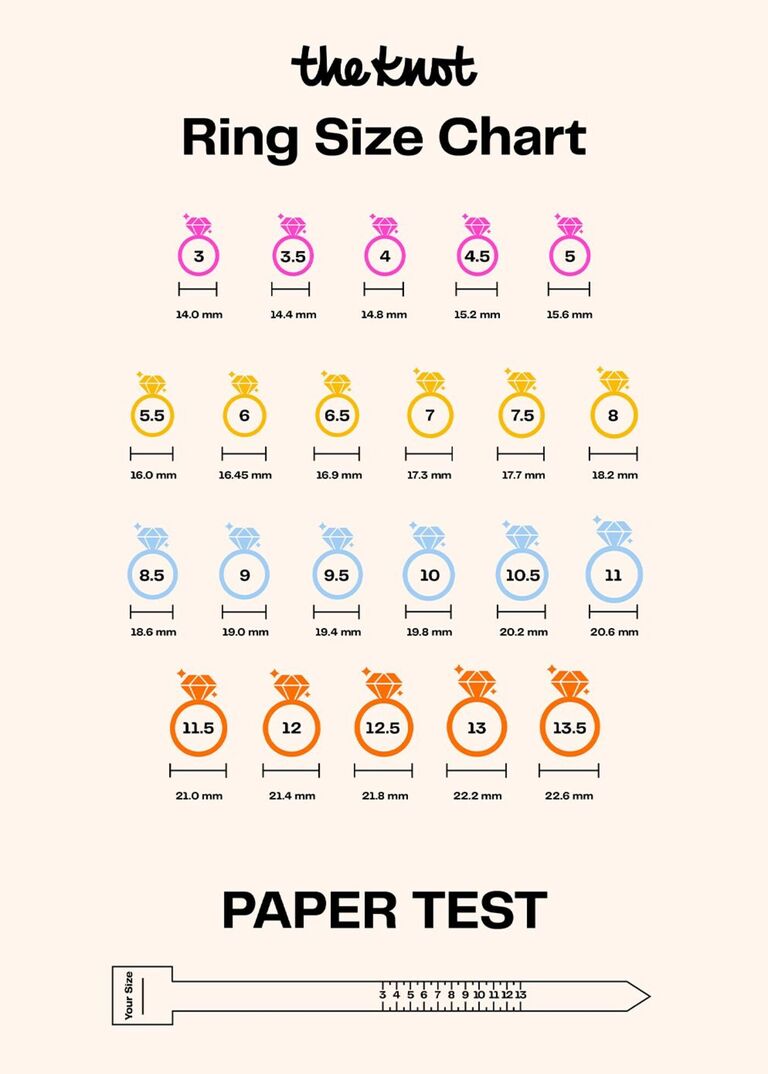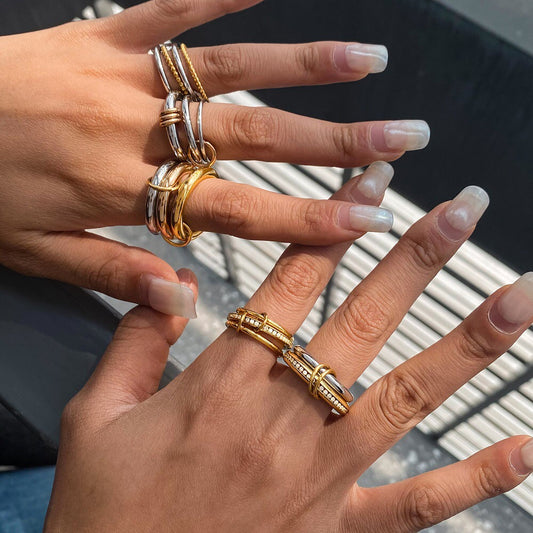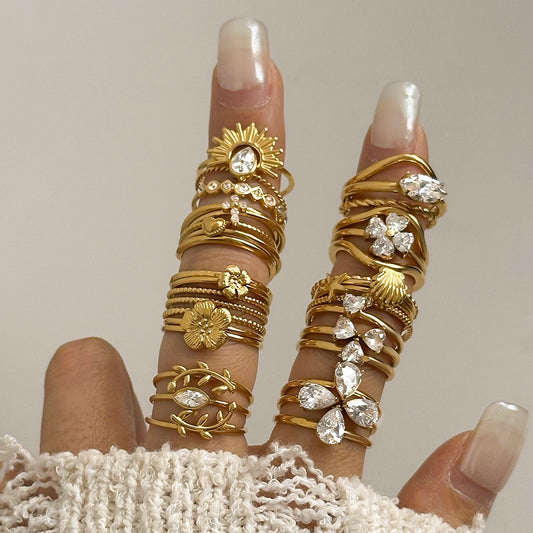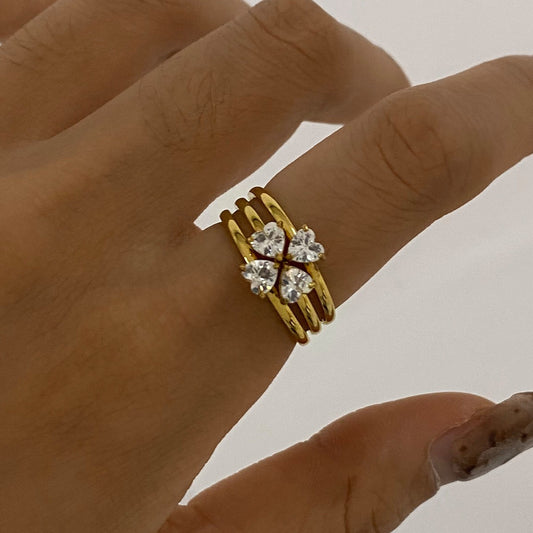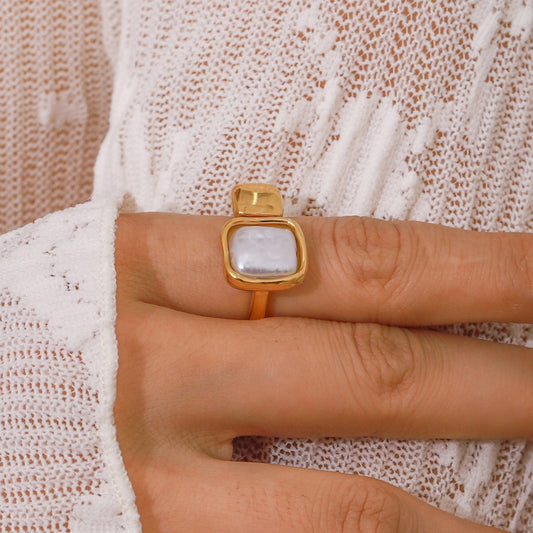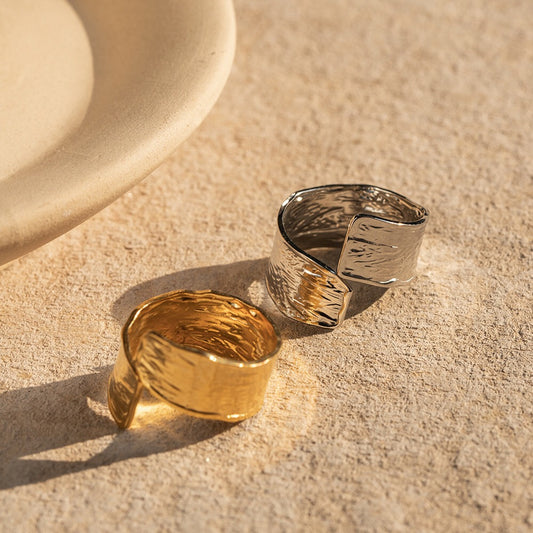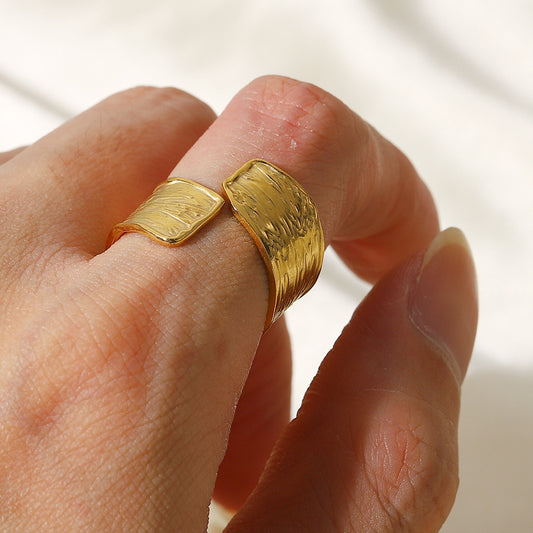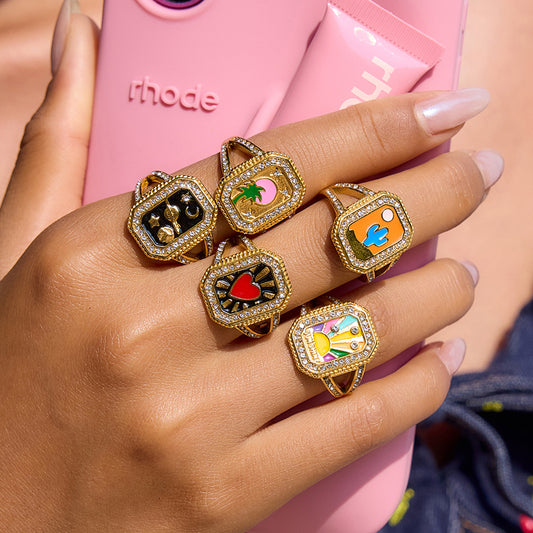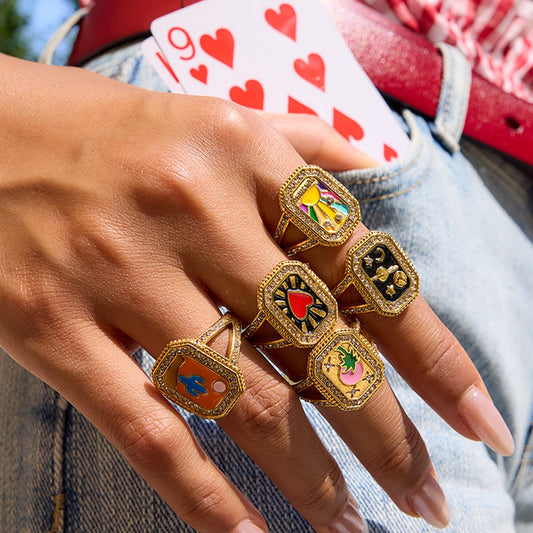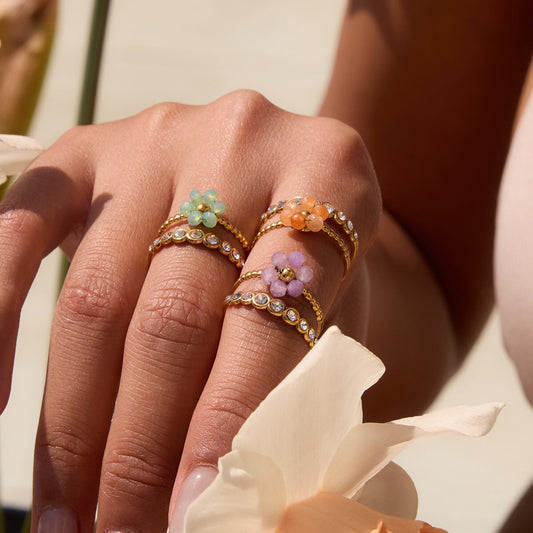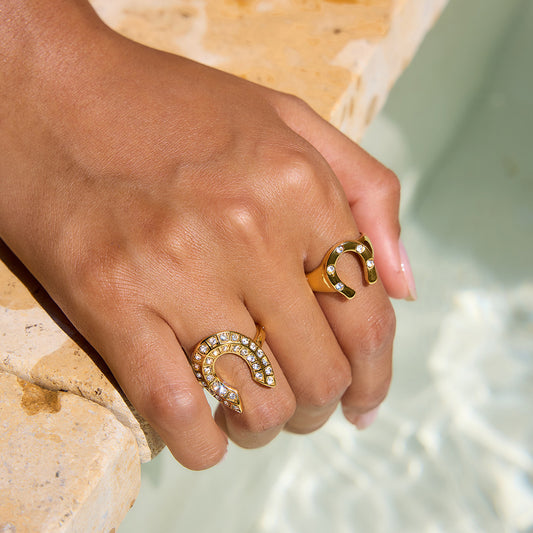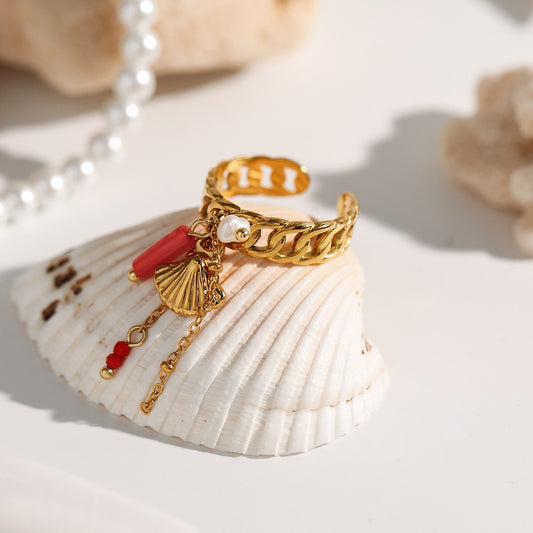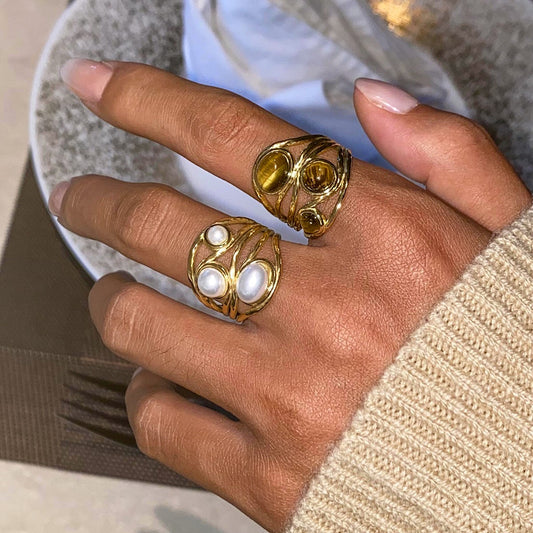How to know your ring size? Buying a ring—whether for yourself, a partner, or a loved one—only feels special if it fits perfectly. The global online jewelry market size is estimated to grow by USD 58.4 billion from 2024-2028, according to Technavio. The good news? You don’t need a trip to the jeweler to get an accurate measurement. With a few household items and simple steps, you can figure out your ring size at home—no fancy tools required. This guide breaks down foolproof methods, common mistakes to avoid, and pro tips to ensure your next ring fits like it was made just for you.
Why Knowing Your Exact Ring Size Matters
Before diving into methods, let’s cover why precision counts. A poorly fitting ring isn’t just inconvenient—it can ruin the experience of wearing (or gifting) it:
-
Too Loose: A ring that slips easily can fall off during daily tasks (washing hands, typing, exercising) and get lost or scratched.
-
Too Tight: A tight ring restricts blood flow, causes discomfort (like indentations on your finger), or becomes stuck—especially in warm weather, when fingers naturally swell.
-
Resizing Limitations: Not all rings can be resized. Full eternity bands (gemstones all the way around), tension-set rings, or thin delicate bands may crack or lose their shape if adjusted. Even resizable rings weaken slightly with each adjustment, so getting the size right the first time preserves the piece’s quality.
What You’ll Need to Measure Your Ring Size
Most methods use items you already have at home. Gather these supplies before you start:
-
A flexible measuring tape (the kind used for sewing—rigid rulers won’t work).
-
A strip of paper (1/2 inch wide, 6 inches long) or a piece of string.
-
A pen or pencil.
-
A ruler (preferably with millimeters, as most ring size charts use metric measurements).
-
An existing ring that fits the finger you want to measure (optional, but helpful for cross-checking).
-
Optional: A printable ring sizer (free templates available online from jewelers like James Allen or Blue Nile—print it at 100% scale to avoid distortion).
Pro Tip: Measure your finger at the end of the day. Fingers are smallest in the morning and swell slightly by evening (thanks to activity, salt intake, or temperature). Avoid measuring right after a workout, hot shower, or meal—these can temporarily inflate your finger size.
How to Know Your Ring Size - 6 Foolproof Methods
Choose the method that works best for your situation—whether you’re measuring your own finger, secretly sizing a partner, or using an existing ring.

Method 1: Flexible Measuring Tape (Most Accurate for Your Own Finger)
This is the simplest way to get a direct measurement of your finger’s circumference (the key to finding your size).
-
Wrap the flexible measuring tape around the base of your finger (where rings typically sit). Keep it snug enough to stay in place, but not tight enough to leave a mark—you should be able to slide one finger between the tape and your skin.
-
Record the measurement in millimeters (mm). This is your finger’s circumference (e.g., 54mm, 58mm).
-
Use a ring size chart (see Section 5) to convert the circumference to a standard size (US, UK, or EU).
Example: A 54mm circumference equals a US size 6, UK size L, or EU size 54.

Method 2: Paper Strip or String (Best for Secret Sizing)
If you’re measuring someone else’s finger (e.g., a surprise engagement ring), a paper strip or string is discreet and easy to use without them noticing.
-
Cut a strip of paper (1/2 inch wide) or use a piece of non-stretchy string.
-
Wrap it around the base of their finger, holding it gently to avoid alerting them. Mark where the end overlaps with the rest of the strip/string.
-
Lay the paper/string flat and measure the distance from the start to your mark—use millimeters for accuracy.
-
Convert the measurement to a ring size with a chart.
Pro Tip: If they’re wearing a ring on the same finger, slide the paper/string under the ring to mimic how the new ring will fit—this ensures you don’t size too small or too large.
Method 3: Use an Existing Ring (Fastest for Known Fits)
If you have a ring that already fits the finger you’re measuring (e.g., a casual band they wear daily), this method skips measuring the finger entirely.
-
Place the ring flat on a ruler, aligning the inner edge (the part that touches the skin) with the 0mm mark.
-
Measure the inner diameter (the distance across the center of the ring, from one inner edge to the other) in millimeters.
-
Calculate the circumference by multiplying the diameter by 3.14 (pi). For example: A 17mm diameter = 17 x 3.14 = 53.38mm circumference.
-
Convert the circumference to a ring size using a chart.
Note: This only works for solid, closed rings (not open-back or adjustable styles), as their inner diameter directly reflects the finger size.
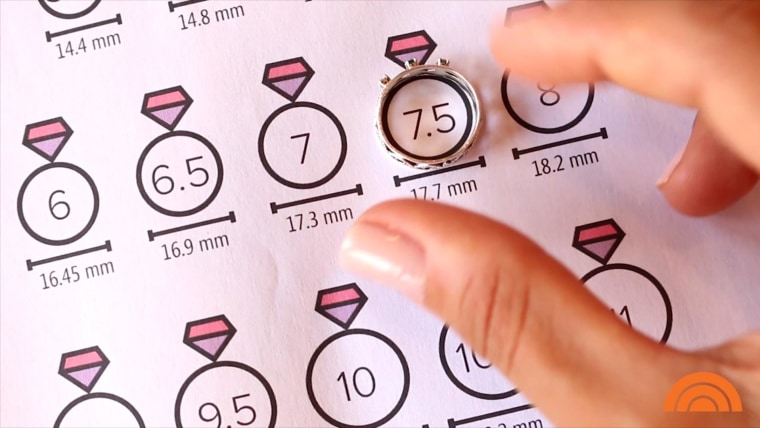
Method 4: Printable Ring Sizer (Most Convenient for Pre-Shopping)
Many jewelers offer free printable ring sizers—perfect if you want to double-check your size before buying online.
-
Download a printable sizer from a reputable jeweler (ensure your printer is set to “100% scale” or “no scaling”—test by measuring the provided ruler on the template to confirm it’s accurate).
-
Cut out the sizer, then cut along the dotted line to create a slot.
-
Slide the end of the sizer through the slot to form a loop.
-
Put the loop on your finger and adjust it until it fits snugly (like a well-fitting ring).
-
Read the size marked where the end of the sizer overlaps with the loop—most templates show US, UK, and EU sizes.
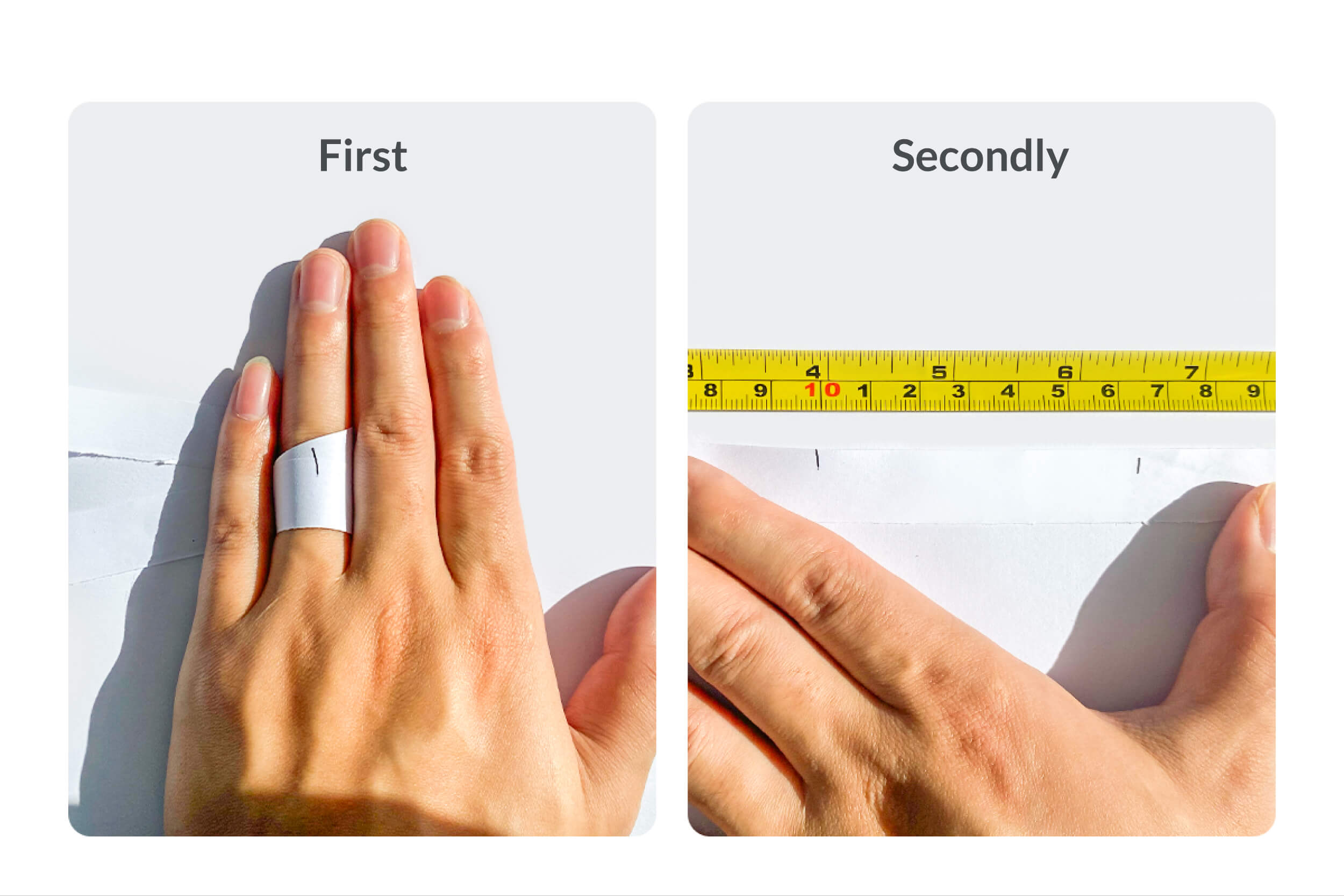
Method 5: Ring Sizer Tool (Most Reliable for Frequent Buyers)
A reusable ring sizer (a plastic or metal strip with marked sizes) costs \(5–\)10 online or at craft stores—and it’s worth the investment if you buy jewelry often.
-
Slide the sizer onto your finger, adjusting the metal tab or slider until it fits comfortably (snug but not tight).
-
Read the size printed on the sizer—look for the number/letter that lines up with the tab.
-
Wear the sizer for 1–2 minutes to ensure it still fits comfortably once your finger adjusts to the pressure.
Method 6: Smartphone Apps (Tech-Savvy Backup)
Several free apps (e.g., “Ring Size Calculator” or “Measure Ring Size”) use your phone’s camera to measure size. While not as accurate as physical methods, they work well as a backup.
-
Follow the app’s instructions to print a calibration sheet (this ensures the camera measures correctly).
-
Either:
-
Place an existing ring on the calibration sheet and take a photo (the app calculates the diameter), or
-
Wrap a paper strip around your finger, mark it, and take a photo of the strip next to the calibration sheet.
-
The app will convert the measurement to a ring size—use this as a starting point, then verify with another method.
Universal Ring Size Conversion Chart
Ring sizes vary by region (a US size 7 isn’t the same as a UK size 7). Use this chart to convert your circumference (mm) to the most common sizing systems:
|
Finger Circumference (mm) |
US Size |
UK Size |
EU Size |
|
48 |
3.5 |
E |
48 |
|
50 |
4.5 |
G |
50 |
|
52 |
5.5 |
J |
52 |
|
54 |
6.5 |
M |
54 |
|
56 |
7.5 |
O |
56 |
|
58 |
8.5 |
Q |
58 |
|
60 |
9.5 |
S |
60 |
Note: Sizes may vary slightly by jeweler—always check their specific chart if shopping online (most list it on their “Size Guide” page).
Pro Tips to Avoid Common Sizing Mistakes
Even the best methods can go wrong if you skip these key steps:
1. Measure the Exact Finger You’ll Wear the Ring On
Fingers on the same hand can differ by 1–2 sizes. For example:
-
Your ring finger (left hand) is often 1/2 size smaller than your middle finger.
-
Your pinky is 2–3 sizes smaller than your ring finger.
Never assume sizes are interchangeable—measure the exact finger the ring will go on.
2. Account for Ring Width
Wide bands (6mm or thicker, like men’s wedding bands or chunky statement rings) need a slightly larger size than thin bands. Why? Wide bands sit more rigidly on the finger and don’t flex as much.
-
For bands 6–8mm wide: Add 1/4 size to your measurement (e.g., US 6 → 6.25).
-
For bands 9mm+ wide: Add 1/2 size (e.g., US 6 → 6.5).
3. Consider Seasonal Swelling
Fingers shrink in cold weather and swell in warm weather. To ensure your ring fits year-round:
-
If measuring in winter: Add 1/4 size (the ring won’t feel too tight in summer).
-
If measuring in summer: Use the exact measurement (it will fit comfortably in winter).
4. Measure 2–3 Times for Consistency
Fingers can vary in size throughout the day (e.g., after drinking water or sitting for hours). Measure 2–3 times at different times (morning, afternoon, evening) and take the average—this gives you the most accurate size.
When to Visit a Jeweler for Professional Sizing
While home methods work for most cases, there are times to get a jeweler’s help:
-
Engagement/Wedding Rings: These are investment pieces—professional sizing ensures a perfect fit, especially for styles that can’t be resized (e.g., full eternity bands).
-
Wide or Intricate Bands: Jewelers use specialized tools (like mandrels, which are cone-shaped metal rods) to measure wide bands accurately, accounting for their rigidity.
-
Uncertain Measurements: If your home results are inconsistent (e.g., one method says US 6, another says 6.5), a jeweler can resolve the discrepancy.
Most jewelers offer free sizing—just call ahead to confirm, and avoid wearing lotions or gloves to your appointment (they can affect the measurement).
Conclusion: Get the Perfect Fit Every Time
How to know your ring size? It doesn’t have to be complicated. With a flexible measuring tape, paper strip, or existing ring, you can get an accurate measurement at home in minutes. Remember to:
-
Measure at the end of the day (when fingers are their most “normal” size).
-
Account for band width and seasonal swelling.
-
Use a conversion chart to match your measurement to regional sizes.
Whether you’re buying a simple band for yourself or a meaningful gift for someone else, a well-fitting ring feels personal, comfortable, and special. With these methods, you’ll never have to guess again—your next ring will fit like it was made for you.
Ready to shop for your perfectly sized ring? Use our guide to measure first, then explore our curated collection of bands, gemstone rings, and more—all designed to fit and flatter. Happy shopping!


